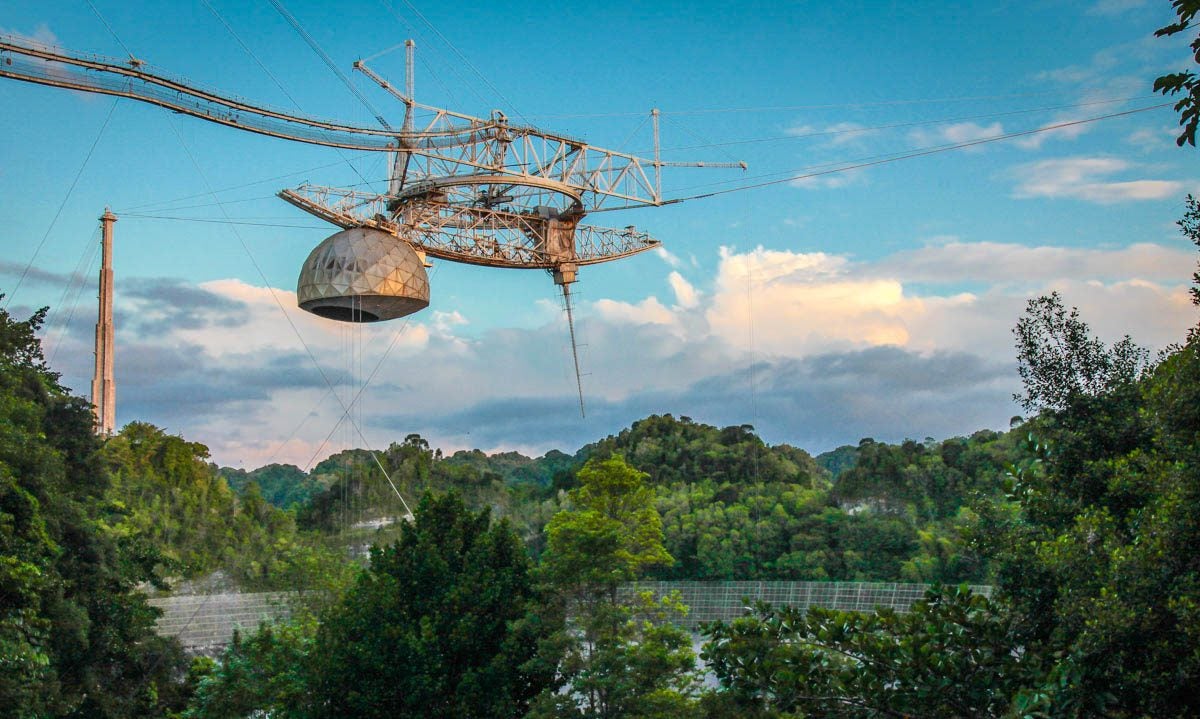Scientists at the Arecibo Observatory in Puerto Rico have discovered a moon orbiting the near-Earth asteroid 2020 BX12.
Orbiting moons have been detected in fewer than 15 percent of all near-Earth asteroids.
Arecibo radar images released Feb. 10 indicate that the moon is about 230 feet wide, compared to the asteroid it orbits, which is about 540 feet wide. The asteroid was discovered earlier this month by the NASA-funded ATLAS near-Earth asteroid survey being conducted from the Mauna Loa Observatory in Hawaii.
The object is defined as a potentially hazardous asteroid because of its size and the proximity of its orbit to Earth’s orbit, although it poses no danger at this time and is currently moving away from Earth.
In January 2020, the Arecibo Observatory, which is funded by the National Science Foundation and which UCF manages under a cooperative agreement, suspended telescope operations as a result of a series of earthquakes striking the southern part of the island. Shortly after resuming operations this month, the world’s most powerful planetary radar made the discovery of the moon orbiting 2020 BX12.
Luisa Fernanda Zambrano-Marin, a science operations associate at Arecibo and graduate student from the University of Granada in Spain, says she was excited about the team coming together to continue observations despite the on-going caution about strong earthquakes. She was running the observation that took the images of 2020 BX12 on Feb. 4-5 and worked with the team to derive the estimates for the properties of what was found to be two asteroids.
“We are more than glad to be able to resume observations, especially when we get to observe asteroids as interesting as 2020 BX12”, says Anne Virkki, the head of the planetary radar group at the Arecibo Observatory.
“Only a few asteroids of more than 150 meters across come as close to the Earth as 2020 BX12 does, and even fewer of them are binary asteroids, which can provide us with valuable information on asteroids’ sizes, shapes, masses and densities. Combining the radar data with optical observations can help to reveal the objects’ compositions, and how binary asteroids form and change with time.”
For more about the moon click here.
In addition to the discovery of the asteroid’s moon, the radar data revealed that the asteroid is likely round, possibly similar in shape to the asteroid 101955 Bennu. NASA’s OSIRIS-REx spacecraft is visiting Bennu right now for a first-of-its-kind American mission to collect samples and return them to Earth.
From the changes in position of the moon during the radar observations, the scientists were able to determine that while the larger asteroid rotates about once every 2.8 hours, the moon likely rotates at the same speed as it orbits the bigger asteroid – approximately every 50 hours or less. The Earth’s Moon is similarly “tidally locked,” meaning it completes one rotation and one orbit over the same amount of time (one month).
The team of scientists, engineers, and telescope operators from the Arecibo Observatory responsible for the observations include: Virkki, Zambrano-Marin, Sean Marshall, Dylan Hickson, Anna McGilvray, Johbany Lebron, Israel Cabrera, Yoliett Velez, Juan Marrero, and Adrian Bague.
UCF manages the NSF facility under a cooperative agreement with Universidad Ana G. Méndez and Yang Enterprises, Inc. The Arecibo Planetary Radar Program is fully supported by NASA’s
Near-Earth Object Observations Program in NASA’s Planetary Defense Coordination Office through grant no. 80NSSC19K0523 awarded to UCF.




